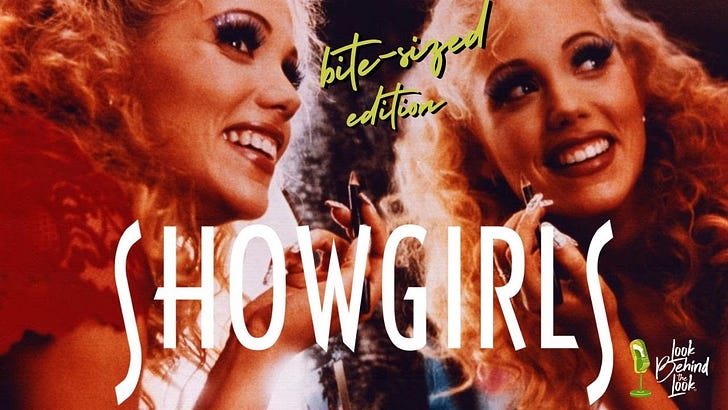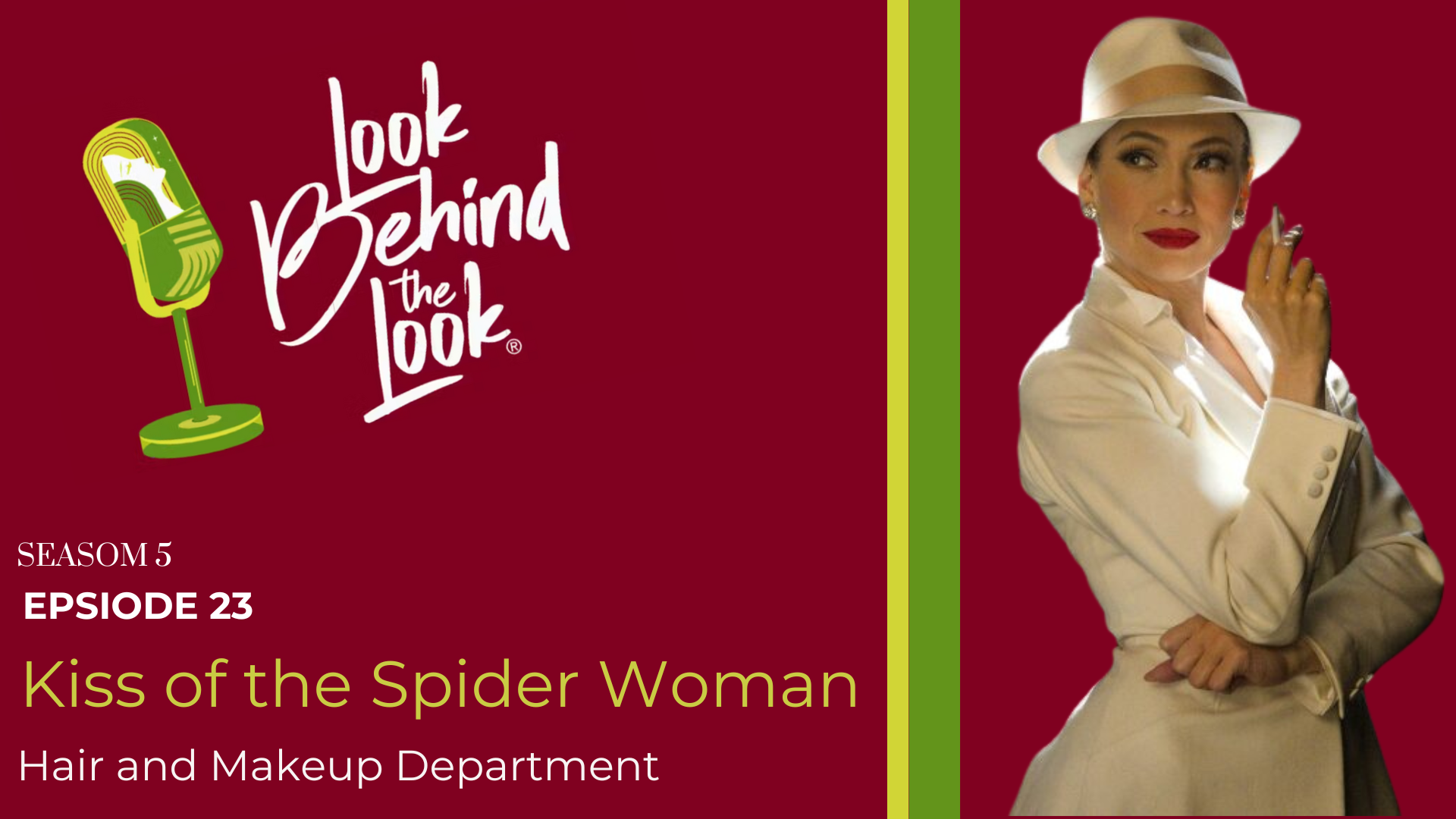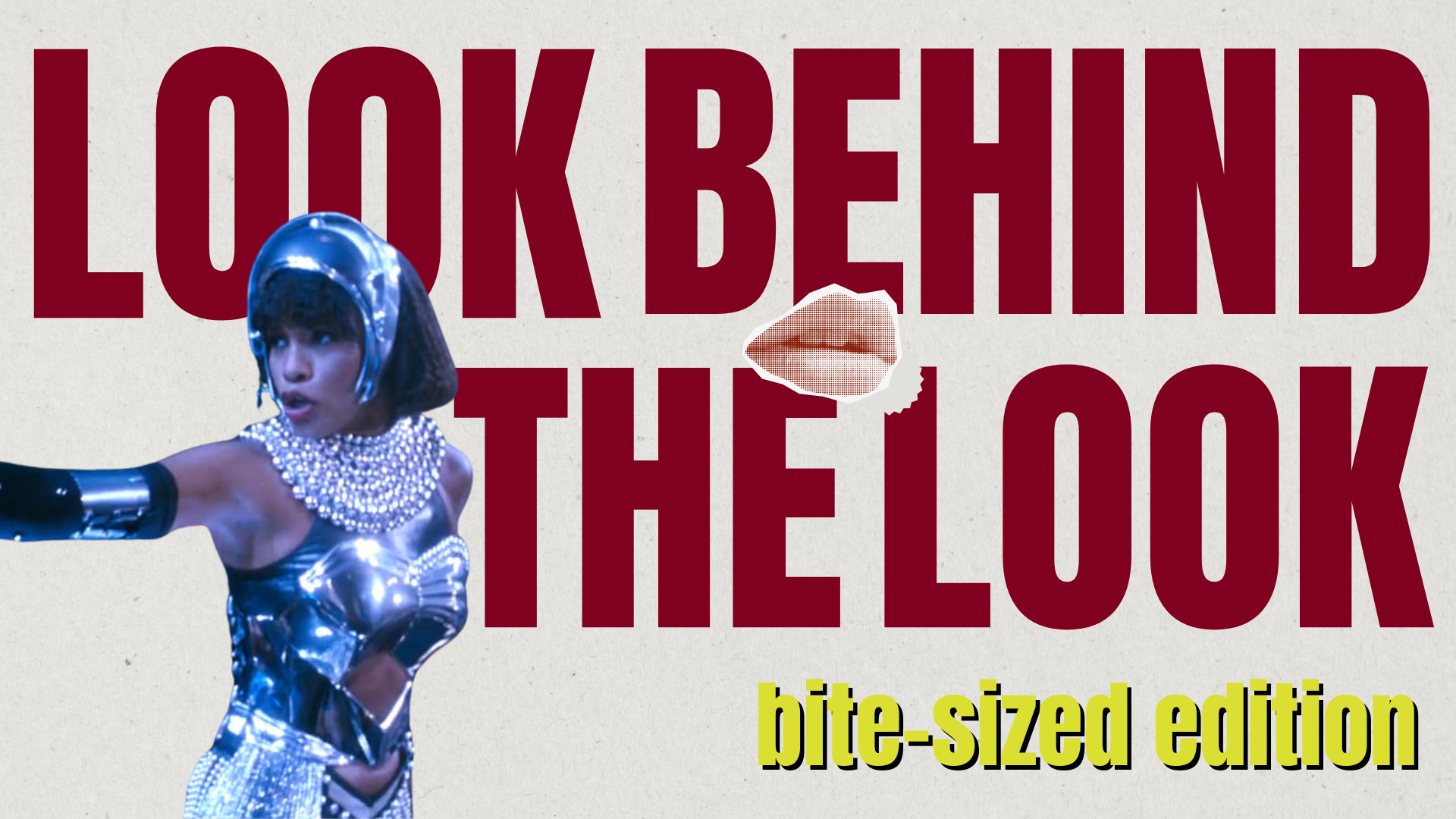The Show Must Go On And So Does Elizabeth Berkley: SHOWGIRLS and Beyond

Where were you when you first saw the most expensive NC-17 Film ever made?
Have you seen it since?
What is your relationship with this iconic box office disaster?
In this Bite-Sized Episode we examine SHOWGIRLS and celebrate Elizabeth Berkley’s strength despite it’s devastating reception. Even The Academy has come around to acknowledge this film’s place in our pop culture history. Enjoy this look back into the film that is a delicious disaster and let me know about your experience with SHOWGIRLS.
0:00 Hi!
0:53 Hair, Makeup and Costumes of SHOWGIRLS
3:19 The push and pull of Showgirls
4:06 The Backlash 5:45 Gina Ravera and her negative personal experience on set
7:16 Tropes and Colorism in SHOWGIRLS
9:52 Justice for SHOWGIRLS- how the film found success through Camp and triumphed on Home Video
Also: See below for a link to the documentary YOU DON’T NOMI for more!
Watch SHOWGIRLS
Watch the documentary YOU DON’T NOMI
Get full access to Look Behind The Look at lookbehindthelook.substack.com/subscribe
Showgirls debuted in theaters in 1995 amid high expectations and bad reviews
Tiffany Bartok: It's 1995, the most expensive NC17 film ever made. Showgirls struts into theaters in rhinestone thongs and bad reviews. Overnight, Elizabeth Berkeley goes from wholesome saved by the bell sweetheart to Hollywood pariah. But like every glitter bomb, the fallout was messy and eventually dazzling. And now, 30 years later, showgirls is back in the cultural spotlight with Taylor Swift's album called the Life of a Showgirl and the acclaimed 2024 filmed the Last Showgirl starring Pamela Anderson.
Elizabeth Berkeley was just 21 when she landed the role of Nomi Malone
We're all asking, what do we really see when we look at Showgirls? Behind the look, hair, makeup, costume. Elizabeth Berkeley was just 21 years old when she landed the role of Nomi Malone. Berkeley trained with choreographer marguerite derricks for 12 weeks before the shoot, an intense prep that included dancing up to 16 hours a day, seven days a week. No body double ever. She scouted strip clubs across la, Vegas and New York, visiting Stringfellloows Palomino scores and immersed herself in the real lives of exotic dancers. Vegas glamour in the 90s met heavy eyeliner, ultra matte looks, smoky beauty and bombshell waves. They were crafted to brand Nomi as both erotic fantasy and performance fiction. The line between fantasy and face blurred, just like Nomi's life on stage. Marieian Ripka and Alicia M Trippie helmed the hairstylist team and the makeup department consisted of David Forrest, Jane Owl, Diane Cummings, Laura Datley, John Blake, Lissysa Whitland, Bert, Timothy A Miguel and Thomas E. Suprend. The costumes were designed by Ellen Mirognick, the same woman who gave Sharon Stone her icy looks and basic instinct for Showgirls. She dove headfirst into Vegas. Seedier reality. In a 2020 interview with Days, she recalls, it wasn't the glamorous, perfectly packaged place we know today. It felt gritty, kind of dangerous. That was the essence of Showgirls. She styled Gnmi like a Barbie gone to seed. Fringed leather jackets, stonewash denim, skin tight spandex and those infamous crystal dripping stage looks. And of course, the Versace moment. That infamous mispronunciation was rooted in real costume politics. Versace refused to loan the dress. Elizabeth Berkeley wasnt yet big enough a star to merit a freebie. Miranik had bought it at retail at the Bellagio, Nomis aspirational knockoff wasnt just scripted. It was a production reality. For Kystal Connors, Gina Gershon's queen be, the inspiration was pure Versace Maribu trimmed chiffon chain mall Corordds rhinestone cowboy hat. Mirrojnik even worked with the New York artists to create jeweled body stockings until director Verhoeven walked in and literally tore them apart, insisting the women be less covered. The costumes went from full bodyuits to tiny panties in a single afternoon. This was the push and pull of showgirls, excess pared down to exposure, fashion weaponized into nudity. Miragejnnel later said she was never embarrassed by the film. She saw it as art, like a David La Chapelle photograph every frame bursting with extremity. Even Mochip Prada recognized it, placing showgirls on her list of perfect failures. If you go down a Reddit rabbit hole, you'll read comments to the tune of she looked like a two dimensional blob, and the costumes appeared to be flat solids that looked like Microsoft paint graphics. The costume choices blurred the line between glam and grotesque because in the end the costumes were character studies. They told us who got to be adorned, who was stripped down, and how glamour itself can be a weapon and a wound. The BACKLASH as the glitter blinded the critics sharpened their knives. The film was savaged. Variety called Berkeley's performance harsh and quickly tiresome. The New York Times dubbed her vacant eyed. Siskl called her not sexy, not attractive. And Barbara Shulglasser of the San Francisco examiner, after comparing her to a Barbie doll, added that Berkeley cannot act is indisputable. She won two razzies, Worst Actress and Worst New Star. Only a few critics appreciated Berkeley's work. Roger Ebert in the Chicago Sun Times wrote that her fierce energy was always interesting, and Entertainment Weekly remarked that the electricity of her anger made her a true leonine presence. Berkeley, still publicly raw about the experience set at the time. There was so much cruelty around it. I was bullied. I was left out in the cold. I did everything I was supposed to do. Berkeley, who had given everything her body, her reputation, her career was scapegoated. Casting directors wouldn't touch her. Magazine covers called her a joke. And here's the cruelest irony. In a 2015 interview with Rolling Stone, director Paul Verhoven later admitted he told her to play it that way. People have, of course, criticized for being over the top in her performance. Most of that comes from me. I pushed it in that direction. Good or not good, I was the one who asked her to exaggerate everything, every move, because that was the element of style that I thought would work for the movie. It wasn't just Berkeley who suffered. Gina Rivera, who played Molly, recounted filming the rape scene. When you do a Scene like that, your body doesn't know it's not real. She took nine hours to shoot it, her trauma palpable in every frame. Nine hours of staged assault. Repeated takes, shouted cues, camera resets. Behoven chasing realism pushed the male actors to get closer, rougher, more physical. Closer, closer, he urged, until one of them actually struck her. The punch you see in the film wasnt staged. It landed. She later said her jaw wasnt right for years. For Gina, the trauma wasnt left on set. It was lodged in her body. In her memory. She has admitted that she's never been able to watch the finished film. What happened on set blurred the line between acting and harm. Gina recalled being held down, her wrists bruised, her body covered in marks from the repeated takes. And unlike a stunt sequence where safety protocols are expected and clear, there were none here. It was her first time filming a rape scene and she had no guidance, no model to follow. There was no acknowledgement of what it was going to be. She said. I didn't know what to ask for. The experience was so traumatic that from that point on, Gina turned down any role that would require her to play a victim of assault. The weight of that role was not only deeply personal, but its long standing reality for women of color on and off the screen. Molly was the only central black character in Showgirls. And her narrative purpose was to absorb violence so that Noi could have her revenge arc. Its a trope with a long lineage. The black woman as a sacrificial figure punished so that the white heroine can find her power. What was meant to be fiction is a dark reality that we must acknowledge and explore.
Showgirls explores colorism in showgirl hierarchies with brutal violence
Colorism in the showgirl world this is where Mollys story intersects with colorism and representation. In the mid century chorus lines of Vegas, lighter skinned dancers were more likely to be cast in featured roles, while performers with darker complexions were kept at the edges or barred entirely. Historian Nadine George Graves has written about this hierarchy. In black performance troops, color was currency, determining who could be seen, who could be exoticized and who remained invisible. In Showgirls, that same structure reappears. Molly is visible, but only as a target. Her body is central to the plot, but never celebrated, adorned or given the glamorizing gaze reserved for the white show girls. The film positions her not as a spectacle, but as a sacrifice. The film's only central black character, Molly, is punished with brutal violence. Molly's brutal fate signals the history of colorism inherent in showgirl hierarchies. Where darker skin means marginal roles, violence or erasure Meanwhile, the all white chorus line of Showgirls sailes on Dark Girls. The 2011 documentary by Bill Duke captured how this press prejudice isn't psychological or accidental, it's cultural, internalized and generational. Women interviewed traced how lighter complexions translated into validation. Darker skin meant erasure and devaluation. One participant recounts the damage done to their self esteem, constant feeling of being devalued and disregarded. Colorism isn't just interpersonal, it structural woven into casting, costuming and camera focus. Whether in the 1995 Vegas style glitz or in decades of the entertainment industries globally, lighter skin has consistently pulled the strings of access and fantasy that's the unspoken layer behind Molly's fate. She's not just a victim of narrative choice, she's a visual metaphor for a system that's always punished women of color. A system that still privileges light skin, beauty, belonging and worth. That's why Gina'testimony hit so hard. Her pain was real, not just in the nine hours it took to film the assault, but in the way her character story embodies a larger truth. A woman of color. Suffering is often made visible on screen and their joy and complexity are erased. Showgirls didn't invent this, but what do we have to say about it 10, 20 and 30 years later? Camp, cult and reclamation theatrical titan no, but video darling, yes. Showgirls generated 100 million do on home video, making it one of MGM's top 20 all time video sellers. Midnight screenings transformed into a cult ritual. Drag queens hosting audiences shouting along, reclaiming what critics dismissed for the LGBTQAI community. G nomi's chaotic ro felt familiar, a messy, defiant kind of survival. Ren a rifle embracing camp culture has said in recent years, showgirls just keeps getting more and more popular. This cult status all created by the fans I represent and get involved with. The cult status Critic retrospectives now see Showgirls as deliberate trash satire, with luminaries like Jacques Rtte calling it one of the great American films of the last few years and Tarantino praising its bold exploitation risk style. At a 2024 Academy Museum screening, Berkeley paid homage to Know Me with glittery smoky eyes, gemstones, glossy peach lips and voluminous waves beautifully crafted by makeup artist Kathleen Carradine and hairstylist Clayton Hawkins. For the first time in decades, she reclaimed her role with grace. That night she received a standing ovation, thanking the LGBTQAI community at fans who stood by the film and by me.
Showgirls is a cautionary tale about entertainment industry cruelty
So what is Showgirls really? Trash Camp, a cautionary tale about entertainment industry cruelty. The truth is that Showgirls is all of those things at once. It's a collision of high camp and high tragedy. It performs violence, fantasy and desire. And underneath, it reveals the machinery that makes stars and destroys them, that adorns somebodies and erases others. For Elizabeth Berkeley, it was a glittering gamble that cost her a good portion of her career. For Gina Rivera, it was a role that left a permanent and profoundly dark impact. For the LGBTQAI community, it became a reclamation of Fair/ure as survival for us. Thirty years later, it still begs the question of who gets to shine, who is sacrificed, and how beauty can be both a crown and a cage. And now, with Taylor Swift writing her own showgirl myth and Pamela Anderson reimagining the archetype, Nomis's ghost still haunts the stage. Three decades later, she's still dancing. And this time, we're watching her with eyes wide open.

































